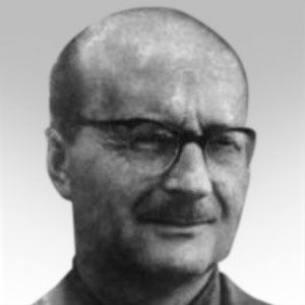
As time passed, Siwiec’s story became more and more famous. His protest was described in the French “Le Nouvel Observateur” weekly already in January 1969, and only after a few weeks the Polish division of the Radio Free Europe informed about the events that took place at the 10th-Anniversary Stadium. In 1981, Siwiec’s family ordered a brochure entitled “September 8th, 1968. A living torch at the 10th-Anniversary Stadium. On the 13th anniversary of the death of Ryszard Siwiec, to all who value the truth.” Ten years later, Maciej Drygas remarkably recalled the story of Siwiec in a documentary “Usłyszcie mój krzyk” (“Hear my cry”) and a radio play “Testament”. Ryszard Siwiec was given post-mortem medals from the presidents of the Czech Republic, Poland and Slovakia. In 2010, Petr Blażek published an album summarising historians’ knowledge on the subject.
Ryszard Siwiec’s act, apart from the self-immolation of Jan Palach, is one of the best described protests of that kind today. However, it doesn’t bring us any closer to grasping what seems impossible to understand – the choice to die horribly as an ultimate form of protest against evil.
Ryszard Siwiec was born on March 7th 1909, in Dębica. Following his father’s death, he moved to Lviv with his mother where he finished high school and graduated from the Humanities department at the Jan Kazimierz University. Then, he got a job at the tax office, first in Lviv and then in Przemyśl, where he settled. During the German occupation he worked in a factory and then became a manager in a grocery store. He was also a soldier of the Polish Home Army.
After the war had ended, he refused a job offer from a school, because he decided that “he won’t be teaching nonsense”. Soon, he founded a wine and beer brewery with Jan Wojnarowicz, where (despite the nationalisation of enterprises) he worked until the end of his days. In 1945, he married Maria with whom he had 5 children (Innocenta, Elżbieta, Wit, Adam and Mariusz). His family and friends remembered him as a good and religious man, standing by his values, passionate about history and collecting literature.
A key to understanding Ryszard Siwiec’s act is not; however, hidden in the story of his life, which despite many interesting facts was quite typical for his generation, but in the analysis of the events from September 8th, 1968.
A precise plan
Siwiec never came to terms with the forced implementation of the Communist system in Poland. He criticised the post-war reality in conversations with his friends; he decided to act due to the events of March 1968. At that time, he prepared leaflets signed “Jan Polak”, which he sent to recipients unknown to us today, with the help of his daughter. Another, decisive blow was the intervention of the Warsaw Pact forces in Czechoslovakia. In the following weeks, Siwiec prepared and executed a precise plan of the protest – notes from his preparations were found by his family after his death.